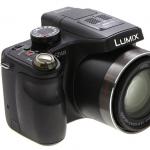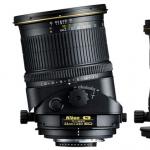The first artificial earth satellite 1957 presentation. Presentation "the first artificial earth satellite". Artificial earth satellites
slide 2
The first artificial earth satellite
slide 3
Having overcome the earth's gravity, the Rocket broke away from the Earth ... And there was no happier moment - Here a new era began. Step... the second... The third separated, Burning in the atmosphere without a trace... And a rapidly flying star suddenly appeared above the Earth. And Mankind froze in amazement: A silver ball flying in the sky - A great creation of human hands - Was sent from the Earth to the Universe as a gift!
slide 4
slide 5
This year, all progressive mankind is celebrating the 55th anniversary of the launch of the First Artificial Earth Satellite. This was the first step towards space exploration.
slide 6
The purpose of this work is: - Familiarization with the history of the creation of the First artificial Earth satellite (AES); - The significance of the launch of satellites for science and all mankind.
Slide 7
The history of the creation of the first satellite is connected with the work on the rocket as such. Moreover, it had a German origin both in the Soviet Union and in the USA. The main achievements of German specialists was the technology of mass production of powerful liquid rocket engines and flight control systems.
Slide 8
Single-stage missiles could not satisfy the military - they needed a multi-stage intercontinental missile capable of delivering "cargo" to anywhere in the world. The development of such a missile was carried out at the Design Bureau Korolev
Slide 9
Sergey Pavlovich Korolev 01/12/1907-01/14/1966 Sergey Pavlovich Korolev - chief designer of the first launch vehicles, artificial Earth satellites, manned spacecraft, founder of practical astronautics, academician of the USSR Academy of Sciences (1958), Hero of Socialist Labor (1956, 1961), laureate Lenin Prize (1957), member of the CPSU since 1953.
Slide 10
Back in 1939, one of the founders of practical cosmonautics in our country, the closest associate of Sergei Pavlovich Korolev, Mikhail Klavdievich Tikhonravov, wrote: “Without exception, all work in the field of rocket technology eventually leads to space flight.”
slide 11
Tikhonravov's group developed the concept of an artificial Earth satellite from 1950 to 1954 almost "underground". In the foreground (left to right): Vladimir Galkovsky, Gleb Maksimov, Lidia Soldatofva, Mikhail Tikhonravov and Igor Yatsunsky; in the background (standing): Grigory Moskalenko, Oleg Gurko and Igor Bazhinov. (Photo courtesy of AzifSiddiki)
slide 12
Although the satellite was called the simplest, it was created for the first time, there were no analogues in technology. Only one thing was set - a weight limit (no more than 100 kg). Quite quickly, the designers came to the conclusion that it is advantageous to make it in the form of a ball. The spherical shape made it possible, with a smaller surface of the shell, to use the internal volume to the fullest extent.
slide 13
Inside the satellite, they decided to place two radio transmitters with an emission frequency of 20.005 and 40.002 MHz. Reception of their signals would allow scientists to study the conditions for the passage of radio waves from space to Earth. In addition, it was necessary to transmit information about the pressure and temperature inside the satellite.
Slide 14
At dawn on October 3, 1957, the rocket, docked with the satellite, was carefully removed from the assembly and test building. Creators of the world's first space complex walked nearby. And the bulk of the rocket before launch was amazingly beautiful. She was all sparkling, covered with frost.
slide 15
On October 4, 1957, at 22:28 Moscow time, the brightest burst of light illuminated the night steppe, and the rocket went up with a roar. Her torch gradually weakened and soon became indistinguishable against the background of heavenly bodies.
slide 16
"It was small, this very first artificial satellite of our old planet, but its sonorous call signs spread across all continents and among all peoples as the embodiment of the boldest dream of mankind." C. Korolev
Slide 17
In an hour and a half - a round-the-world trip, 15 revolutions per day, and each time along a new route, because the plane of the satellite's orbit in space is stationary, and the Earth rotates around its axis inside this orbit. Thousands of eyes and radios followed its flight. And every hour of his life interested scientists.
Slide 18
For the first time in history, hundreds of millions of people could observe in the rays of the rising or setting sun an artificial star moving across the dark sky, created not by gods, but by human hands. And the world community perceived this event as the greatest scientific achievement. For the first time, the first cosmic velocity was achieved, calculated by the founder of classical physics and the law of universal gravitation, the Englishman Isaac Newton (1643 - 1727).
Slide 19
On February 1, 1958, the first American satellite "Explorer-1" was launched into orbit, and a little later, independent launches of satellites were made by other countries: November 26, 1965 - France (satellite "A-1"), November 29, 1967 - Australia ("VRESAT- 1"), February 11, 1970 - Japan ("Osumi"), April 24, 1970 - China ("China-1"), October 28, 1971 - Great Britain ("Prospero").
Slide 20
Thanks to these flights, people began to realize that humanity has one single home, one planet, and there is a goal that can unite all peoples - the study of the Earth for the benefit of all people. Outer space became an arena for scientific cooperation, and world science was enriched with new invaluable data.
slide 21
The pioneers of practical astronautics, the creators of the first artificial satellites of the Earth, were able to look far ahead. But even in those years they would hardly have been able to imagine that their small and simple devices in modern terms would give rise to the formation of a grandiose system.
slide 22
The flight of the first satellite was the beginning of a whole series of courageous deeds of all mankind, who saw satellites in space, the first flight, a man in space, the first steps on the Moon, the first radio transmissions from Mars and from space probes that visited the planets of the solar system.
slide 23
Over the past 55 years, more than one thousand spacecraft have been launched into near-Earth orbits. Their orbits encircle the Earth in a dense grid, they "see" everything that happens on Earth. Collectively, they constitute a gigantic information system.
slide 24
It can be concluded that science needs astronautics - it is a grandiose and powerful tool for studying the Universe, the Earth, and man himself. Astronautics is vital for all mankind! Every year, satellite systems will become an increasingly significant part of the Unified Communications System.
Slide 25
This work was presented in the 7th-9th grades of the school on the Day of Cosmonautics and dedicated to the 55th anniversary of the launch of the first artificial Earth satellite.
slide 26
List of used sources 1. V.P. Glushko "Cosmonautics". Publishing house “Soviet Encyclopedia” 1970. 2. “Rocket and Space Corporation Energia” named after S.P. Korolev”, RSC Energia Publishing House, 1996. 3. Talyzin N.V. "Communication Satellites - Earth and the Universe". 4.images.yandex.ru 5.microchooser.com 6.ru.wikipedia.org
View all slides
Completed by a student of 6 "A" class MOU "Secondary School No. 76" Andrey Tsarev Since ancient times, people, looking at the sky, tried to understand what is up there, above the clouds ... But for many thousands of years only Gods lived in heaven ... Powerful and inaccessible, striking with lightning, giving rain and terrible heat. And only in the 20th century people were able to rise to the clouds, and then go out into space. And our fathers and grandfathers were the first... The founder of modern cosmonautics The founder of modern cosmonautics is the Russian scientist and inventor Tsiolkovsky Konstantin Eduardovich (1857-1935). His research for the first time showed the possibility of achieving cosmic speeds, proving the feasibility of interplanetary flights. He was the first to study the question of a rocket - an artificial satellite of the Earth and expressed the idea of \u200b\u200bcreating near-Earth stations as artificial settlements using the energy of the Sun, and intermediate bases for interplanetary communications, considered the biomedical problems that arise during long-term space flights. The USSR - the birthplace of cosmonautics The Soviet Union was one of the first states where purposefully carried out work on the creation of rocket technology, both military and space purposes. As early as 1931, the Jet Propulsion Study Group was created, which, along with the Gas Dynamics Laboratory, played a major role in the birth of Soviet rocket science. In 1933, both groups were merged into the Reactive Research Institute, in which prominent scientists worked: S.P. Korolev, F.A. Zander, M.V. Keldysh, N.K. Tikhonravov. and others. The pioneer of rocket technology Sergei Pavlovich Korolev, an outstanding Russian scientist, is not without reason called the "Pioneer of rocket technology." In the history of space exploration, a whole era of the first remarkable achievements is associated with his name. Korolev's scientific and technical ideas were widely used in rocket and space technology. Under the leadership of Korolev, many ballistic and geophysical rockets, launch vehicles and manned spacecraft "Vostok" and "Voskhod" were created, on which for the first time in history a man's space flight and man's exit into outer space were made. The first artificial satellite of the Earth. If you go far from big cities and peer into the dark, starry sky for a long time, you can find a small spark moving across the sky. It will be one of the artificial satellites of the Earth. The launch of the first artificial Earth satellite took place in the USSR on October 4, 1957. The satellite flew for 92 days, making only 1440 revolutions around the Earth. The famous science fiction writer Ray Bradbury said about the first satellite: "... that little light, rapidly moving from edge to edge of the sky, was the future of all mankind." Living Beings in Orbit The names of the brave conquerors of the Cosmos, the dogs Belka and Strelka, are known all over the world. But before them, more than 30 dogs flew into orbit, with varying degrees of success. Belka and Strelka are the first animals to make an orbital space flight on the Sputnik-5 spacecraft and return to Earth unharmed. The launch took place on August 19, 1960, the flight lasted more than 25 hours, during which the ship made 17 complete orbits around the Earth. Along with dogs, monkeys, rats, turtles and other animals flew into orbit at different times. Yuri Alekseevich Gagarin Yuri Alekseevich Gagarin was born on March 9, 1934 in the village of Klushino in the Gzhatsk district of the Western region of the RSFSR (now the Gagarinsky district of the Smolensk region). By origin, he comes from peasants: his father, Alexei Ivanovich Gagarin (1902-1973), is a carpenter, his mother, Anna Timofeevna Matveeva (1903-1984), worked on a dairy farm. For almost a year and a half, in the most difficult conditions, the Gagarin family was under fascist occupation. Yuri's younger brother, Boris Gagarin, was hanged by the Germans on a scarf, but his mother managed to save him. First steps in life Yuri went to school on September 1, 1941, still in his village, but then the Gagarin family moved to the city of Gzhatsk, where in May 1949 Gagarin graduated from the sixth grade of the Gzhatsk secondary school. On September 30, 1949, he entered the Lyubertsy vocational school No. 10. At the same time, he entered the evening school for working youth, from which he graduated from the seventh grade in May 1951, and in June he graduated with honors from the school as a molder-founder. Connection with Saratov In August 1951, Gagarin entered the Saratov Industrial College, and on October 25, 1954, he first came to the Saratov flying club. In 1955, Yuri Gagarin achieved significant success, graduated with honors and made the first solo flight on a Yak-18 aircraft. In total, Yuri Gagarin performed 196 flights in the flying club and flew 42 hours 23 minutes. Looking ahead, we note that Gagarin landed, after his flight, in the Saratov region, not far from Engels near the village of Smelovka. In order to commemorate the landing of the first cosmonaut on Saratov land in 1965, a 27-meter stainless steel obelisk was erected. The work was carried out by workers and engineers of the Engels enterprises. Path to Space On October 27, 1955, Gagarin was drafted into the army and sent to Moscow. Chkalov, to the 1st Military Aviation School named after K. E. Voroshilov, which he graduated with honors on October 25, 1957. For two years he served in the 122nd Fighter Aviation Division of the Northern Fleet. On December 9, 1959, Gagarin wrote an application with a request to be included in the group of cosmonaut candidates, and already on March 3, 1960, by order of the Commander-in-Chief of the Air Force, he was enrolled in the group of cosmonaut candidates. On March 25, regular classes began under the cosmonaut training program. He said - "Let's go!" On April 12, 1961, the Vostok-1 spacecraft was launched from the Baikonur Cosmodrome for the first time in the world, with pilot-cosmonaut Yuri Alekseevich Gagarin on board. The ship completed only one revolution around the Earth and was in space for only 108 minutes. For this feat, he was awarded the title of Hero of the Soviet Union, and starting on April 12, 1962, the day of Gagarin's flight into space was declared a holiday - Cosmonautics Day. It was a real feat. Few people know, but three TASS reports were prepared about Gagarin's flight into space. The first - "Successful", the second - "Appeal to the governments of other countries", asking for help in the search, and the third - "Tragic", if Gagarin does not return alive. The first spacewalk The first spacewalk was performed by Soviet cosmonaut Alexei Arkhipovich Leonov on March 18, 1965 from the Voskhod-2 spacecraft using a flexible airlock. The total time of the first exit was 23 minutes 41 seconds (of which 12 minutes 9 seconds were outside the ship), and based on its results, a conclusion was made about the ability of a person to perform various work in outer space. Spacewalks are always dangerous, and the first spacewalks were extremely dangerous. Having completed the first exit program, Leonov had difficulty returning to the ship, since the swollen suit did not pass through the Voskhod airlock. Only the release of air pressure in the spacesuit made it possible then to complete the flight safely. Woman in Space by Tereshkova After the first successful flights of Soviet cosmonauts, Sergei Korolev had the idea to launch a woman cosmonaut into space. In 1962, a group of five people was formed, among which was Valentina Tereshkova. She made her space flight and the world's first flight of a female cosmonaut on June 16, 1963 on the Vostok-6 spacecraft. The flight lasted almost three days. The ship made 48 revolutions around the Earth and landed in the Baevsky district of the Altai Territory, where the stele was subsequently installed. Valentina Vladimirovna was awarded the title of Hero of the Soviet Union, she rose to the rank of Major General. Everything is ahead… For more than 50 years, people have been flying into space. They were on the Moon, many months of expeditions took place on space stations, artificial satellites reached the far corners of the solar system. Reusable ships continue to be created and developed, the first tourists flew into space. Mankind is planning flights to Mars, looking into other star systems with the help of powerful telescopes. All this is ahead, but we must always remember "WHO WAS THE FIRST ...". List of used literature 1.www.cosmosravelin.narod.ru 2.www.wikipedia.org 3.www.cosmoworld.ru 4.www.astronaut.ru 5.www.chudesa.by.ru 6.www.kp.ru
1 slide

2 slide
The launch of the first artificial Earth satellite On October 4, 1957, the whole world was shocked by the news that the first Soviet artificial Earth satellite, Sputnik-1, had been launched into near-Earth orbit. So the first step into the sky was taken. “It was small, this very first artificial satellite of our old planet, but its ringing call signs spread across all continents and among all peoples as the embodiment of the bold dream of mankind,” said S.P. Korolev, chief designer of rocket and space systems.

3 slide

4 slide
Man has dreamed of flying for a long time. And not only dreamed, but also built his own hypotheses about this. So, for example, back in 1687, the great mathematician and physicist Newton suggested that if a lead cannonball is fired from a cannon standing on a mountain, then it will fly several miles along a curve before falling to the ground. If you shoot it with double force, then it will fly off even further. By increasing the speed, you can increase the flight range, or you can make it surround the entire earth and even go into the heavenly spaces. The first to translate dreams into reality was K. E. Tsiolkovsky, when he deduced a formula for determining the speed of a rocket in outer space. Thus, already at the beginning of the XX century. there was a theoretical possibility of manufacturing artificial earth satellites. The impetus for their creation was the successful development of the first ballistic missile. The problems of its design and testing were dealt with by a group of scientists led by Academician M.V. Keldysh. For the first time, the decision to create an unoriented satellite of the Earth, launched with the help of an intercontinental ballistic missile, was made in 1956. According to preliminary calculations, it should have weighed approximately 1000-1400 kg, of which 200-300 kg was allocated for scientific equipment. The first launch was scheduled for 1957. At that time, the United States was preparing to launch its own artificial satellite. But the first attempt was unsuccessful, and the US Navy's Vanguard rocket overturned on the launch pad and exploded.

5 slide
The scientists decided to make the Soviet satellite in the form of a ball, which would allow the fullest use of its internal volume. In finished form, "Sputnik-1" (it received such a name) weighed only 83.6 kg; its diameter was 58 cm. To better reflect sunlight and provide the necessary thermal conditions, the case was made of aluminum alloy. The apparatus was powered by silver-zinc batteries capable of operating for 2-3 weeks. Four rod-shaped antennas 2.9 m long were installed on the outer surface of the apparatus, occupying a working position after entering orbit. Such a four-antenna system reduced the influence of the rotation of Sputnik-1 on the quality of signals received on Earth. In the interior of the sphere filled with nitrogen, a constant temperature was maintained by means of ventilation controlled by signals from special temperature sensors. Two radio transmitters were placed inside the apparatus, transmitting information about the pressure and temperature inside the satellite. With the help of the obtained data, scientists studied the conditions for the passage of radio waves from space to Earth. The signals were transmitted in the same way as by telegraph, with a wave length of 0.3 seconds. The transmitters worked alternately, changing after continuous operation for 14 seconds. The first satellite was called the simplest, although it had no analogues in the technology of that time. With its help it was possible to carry out a number of scientific researches. For example, thanks to the spherical shape of the body of Sputnik-1, it was possible to determine the density of the atmosphere at high altitudes with the greatest accuracy.

6 slide
October 4, 1957 at 22:28 Moscow time, Sputnik-1 was launched into orbit. He began to give the first signals from space immediately after separation from the last stage of the rocket. The first spacecraft made 1440 revolutions around the Earth, spending 96 minutes for each revolution. 10.2 sec. Its maximum distance from the Earth's surface was 947 km. It was in Earth orbit for only 92 days, after which it burned up in the dense layers of the atmosphere. But this day was the beginning of a new, space age of mankind, and the Russian word "satellite" entered many languages of the world.





